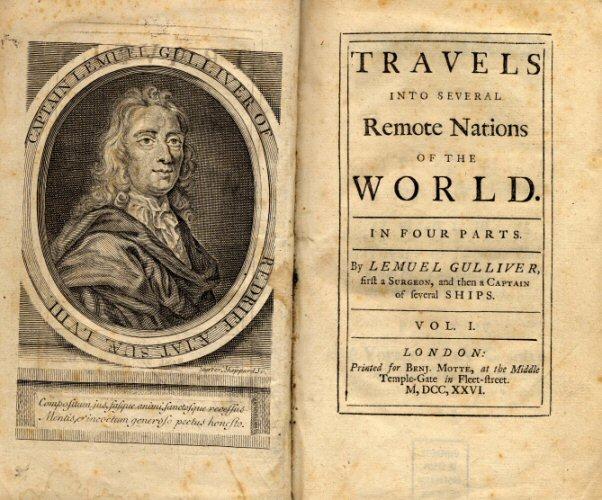
Guliver´s Travels: Book & Film Adaptations
Gulliver’s Travels is a classic book written by Irishman Jonathan Swift in 1726, the book won immediate fame and has remained a favorite among both children and adults even being among the set reading books for many university literary courses.
The Story of Guliver´s Travels
Part 1: Lemuel Gulliver is shipwrecked on the island of Lilliput where the people are 6 inches tall (so here he is a giant), he pleases the court and is free to roam the land. He helps them capture their enemy’s fleet of ships but when he refuses to destroy the enemy nation of Blefuscudians he is charged with treason, escapes to Blefuscu and finds a boat which brings him home again.
Part 2: This time on his journey he is abandoned in Brodingnag where the people are giants compared to him. He is favored by the court until he tells the king of Europe and the king has him thrown in the sea in a box which eventually brings him home.
Part 3: This time Gulliver arrives on a floating island, Laputa where the people are devoted to arts and science but cannot pursue them practically so their skills are wasted. Manpower and talent is wasted by bad bureaucracy. He is taken to Balnibarbi then the island of Glubbdubdrib where he meets a magician and has philosophical discussions with him. Then it’s on to Luggnagg where he meets the Strudbrugs, people who are eternally old. He once again reaches home.
Part 4: Abandoned on a new land he meets the Houyhnhms – intelligent horses and the Yahoos – depraved human beings. Having integrated with the Houyhnhms Gulliver is seen by them to just be an intelligent Yahoo and is expelled. On returning home he finds it hard to live among the Yahoos and so he keeps to himself.
The Book’s Social Significance
What made this book which appeared to be a children’s fantasy adventure book become so renowned was its subtle (actually not so subtle) social satire of human nature and also its satire of the literary genre the “traveler’s journal”.
Through the book Swift points out faults in the European government of the time, human inability to reconcile differences between faiths and nations and he comments on whether man is basically good or evil. Because the later parts of the book are more complex and laden with social comment the section on Liliput is the most popular and often sold as a separate volume.
Several of the words from the book have made their way into common English lexicon like “Liliputian” meaning small and “Yahoo” meaning someone a little rough around the edges!
Film Adaptations
1939 – Max Fleischer’s: A film very loosely based on the first part of the book and one of the first films using cel-animation.
1960 – The Three Worlds of Gulliver: A film adaptation using special stop-motion animation effects, staring Kerwin Mathews and telling a version of part one of the book.
1970 – Case for a Rookie Hangman: A Czech film version taking a satirical stab at Communism.
1977 – Gulliver’s Travels: a Richard Harris adaptation using actors and animation.
1996 – Gulliver’s Travels: A TV adaptation with Ted Danson giving a version close to the original book’s plot.
2010 – Gulliver’s Travels: A modern comedy film adaptation with Jack Black in including all the fun parts of the book and excluding the later parts of the book.


